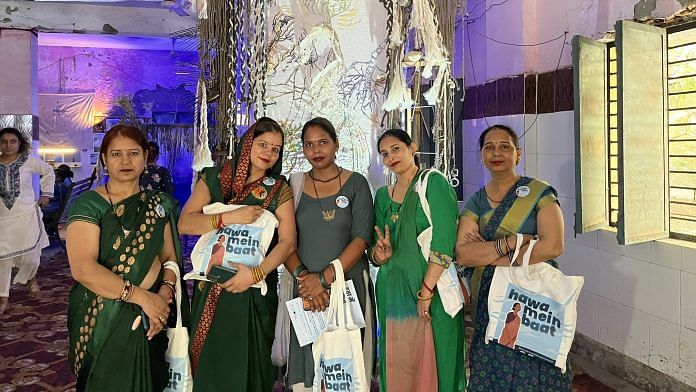New Delhi: More than 40 women from Nand Nagri have stepped out of their windowless, 8×8 sq ft houses to demand clean air. And they’re doing it through art.
As part of the public art project, Hawa Mein Baat (full of hot air), the women—domestic workers, waste pickers, and others in the informal sector—have banded together to be heard and seen. Their first exhibition at Nand Nagri’s community hall in New Delhi features four tapestry panels with motifs of birds in flight and different natural elements – depicting their longing for simpler times.
“The idea of this exhibit is Hawa Mein Baat, which a lot of women are told all the time,” said Gurpriya Singh from the non-profit Help Delhi Breathe, which tied up citizens’ collective, the Mahila Housing Trust (MHT), to launch the project. In reclaiming the phrase ‘hawa mein baat’, these women are refusing to be written off in the discourse on climate change and air pollution.
One of the centrepieces that instantly catches the eye is an arch-shaped panel with the stitched figure of a woman. She’s sitting with her cat, her back to the door. “There’s no one around her and she is thinking ‘How do I see the blue sky?’,” explains Somvati, a home-based worker from the neighborhood who worked on the panel. Pointing to the image, she laughed and added that the woman was talking to her cat.
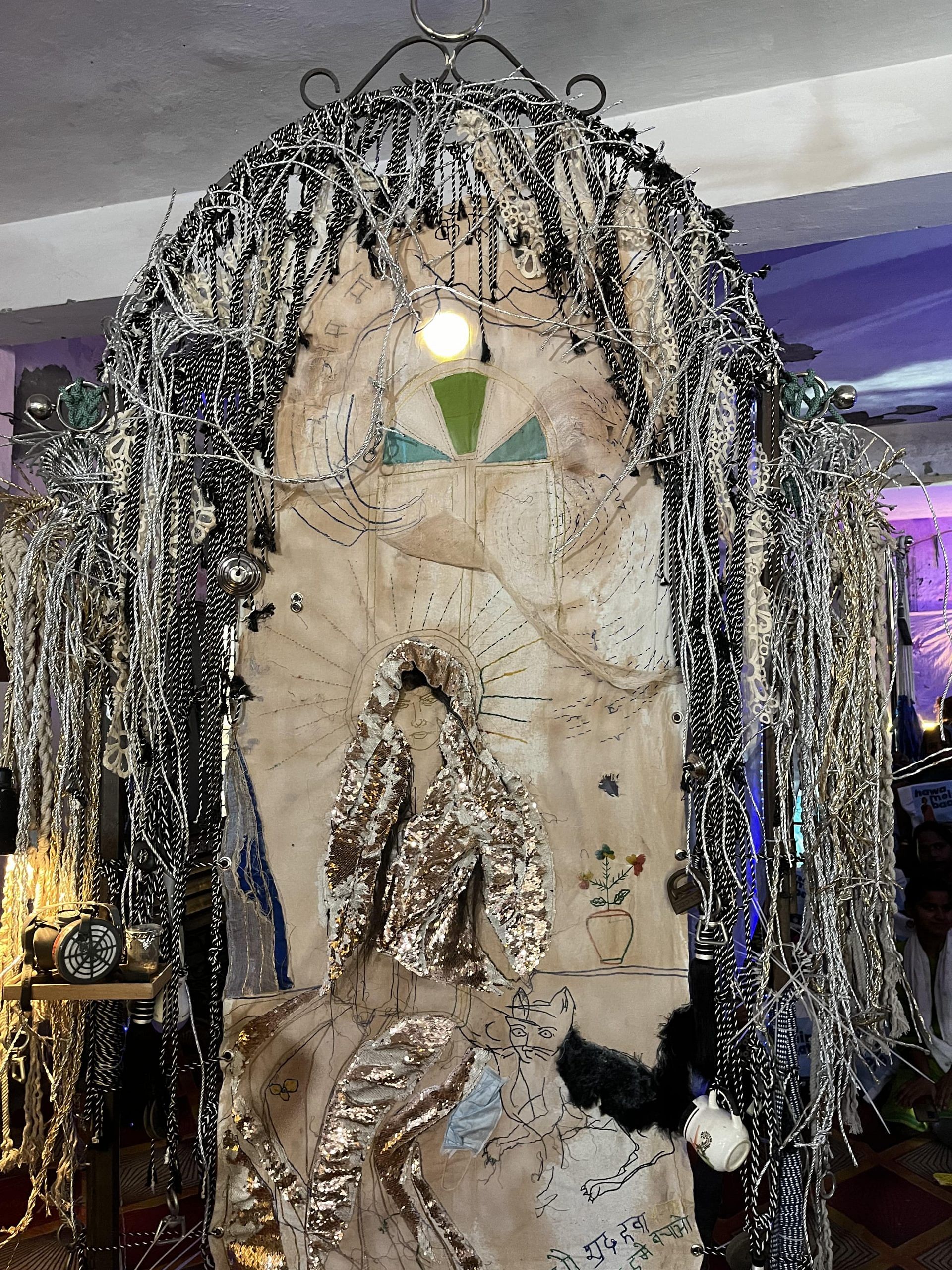
Images of the struggle
Through their tapestries, the women in the north-eastern reaches of Delhi have woven stories of big dreams—and shattered hopes. A discarded wedding card stitched onto a cloth narrates the marital challenges of the younger generation. How can they hope for a better future while being surrounded by landfills?
The materials and fabrics used in the exhibition are recycled. Stacks of rope, tea cups, steel utensils, small tables, and lights are placed around each panel—symbols for the maximalist and organised yet mismatched interiors of their small homes. The exhibits seamlessly juxtapose women’s private domestic space with the changing climate of the world outside. A number of stitched Hindi slogans also appear on each panel.
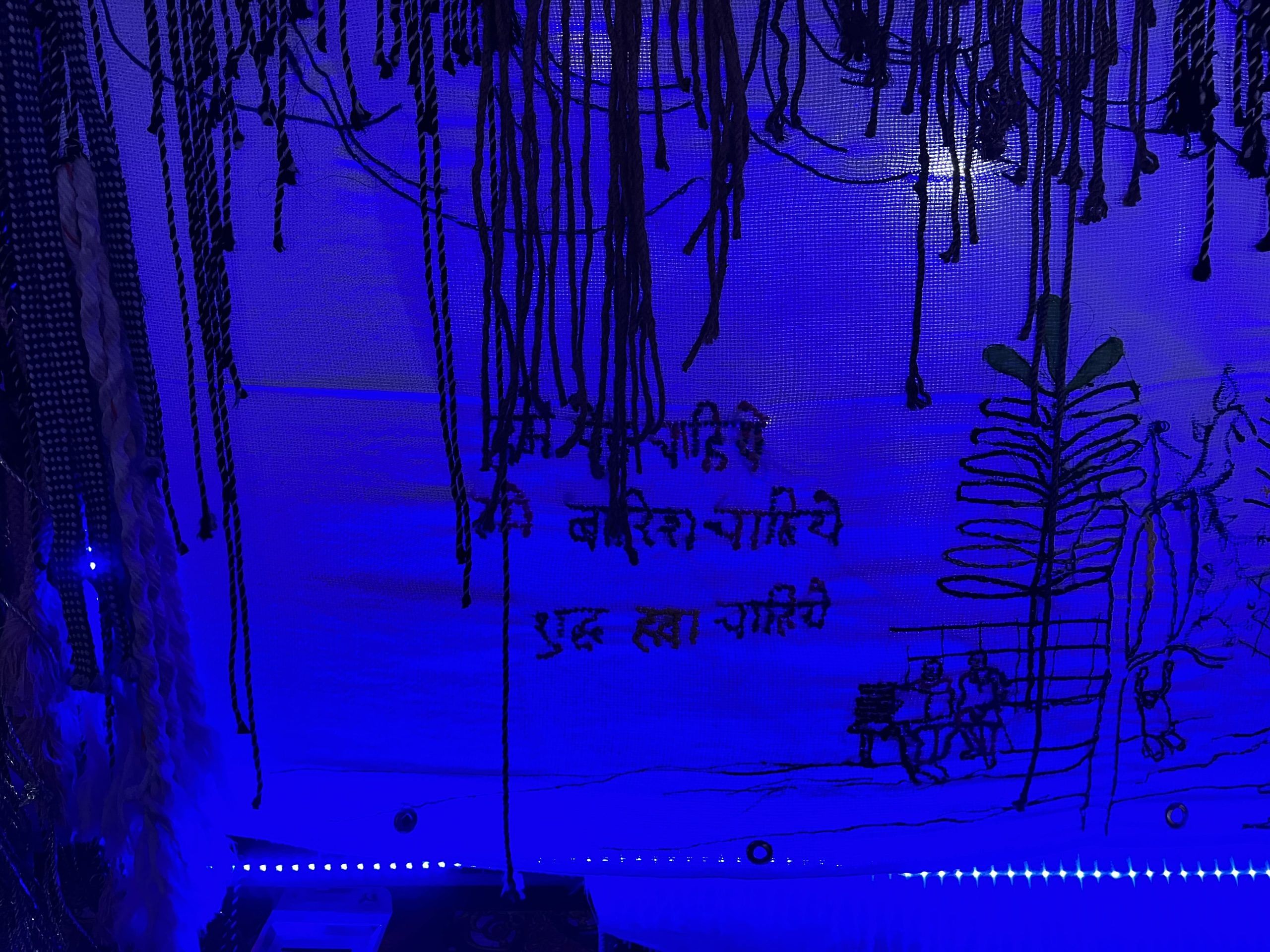
The women were guided by artists Niroj Satpathy and Moumita Basak every step of the way, but the slogans and imagery are entirely their own. One such slogan demands clean air for their children. “This is the language of mothers. For them it’s ‘Even if I don’t get it [clean air], my children should’,” said Moumita, the textile artist leading this project. Pointing to another exhibit, a flag with a makeshift construction site beside it, she reads out the words saaf (clean), hawa (wind), kadvi (bitter) from it. The idea, she says, is to start a dialogue around climate change by the women and for the women.
There is also a small exhibition of X-rays of lungs showing the effects of air pollution on women, alongside images of barren lands. Small containers are filled with polluted water used by the women. In the corner, a makeshift screen runs behind-the-scenes footage from the workshops, where women talked about their everyday negotiations with climate change.
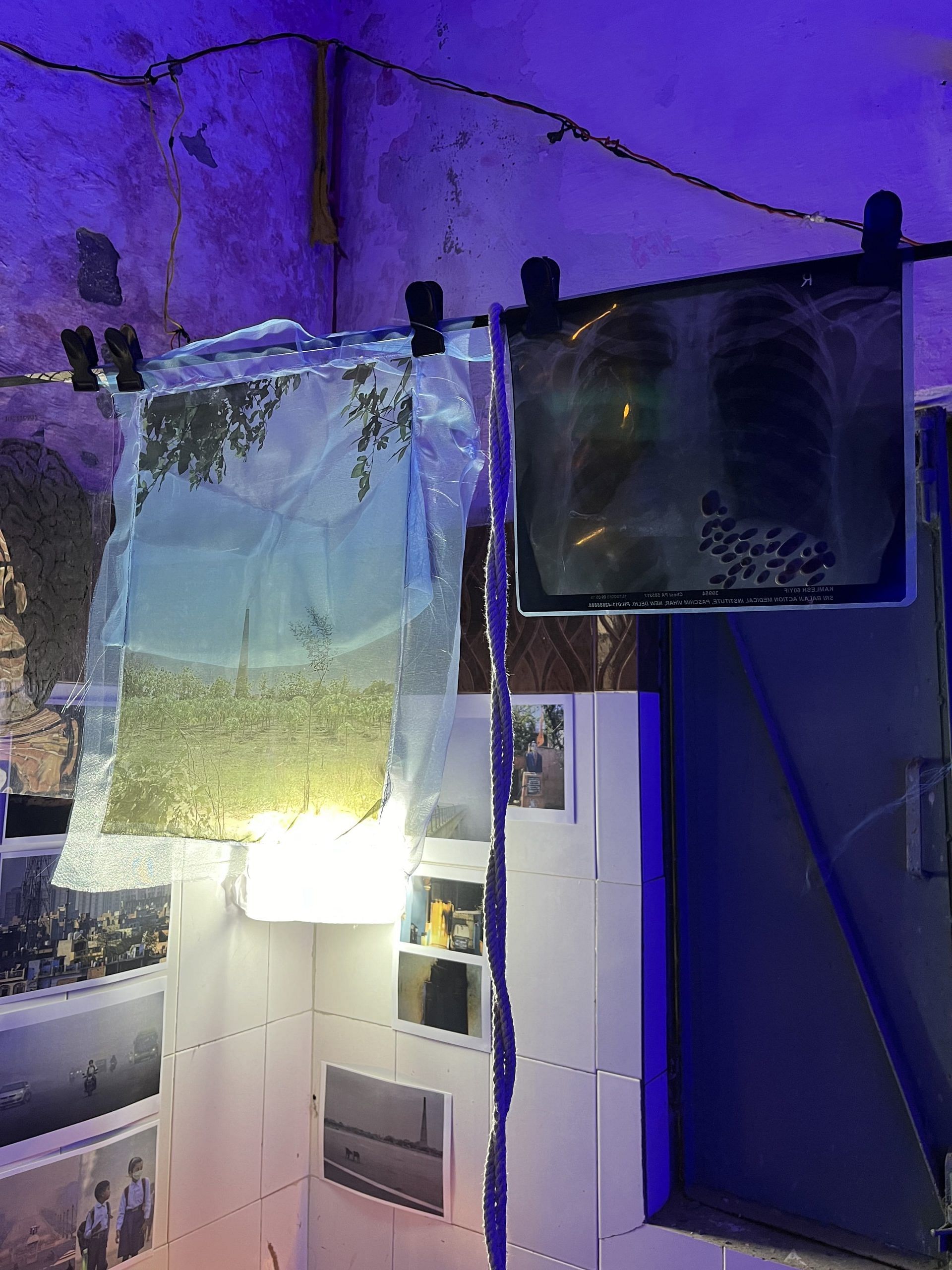
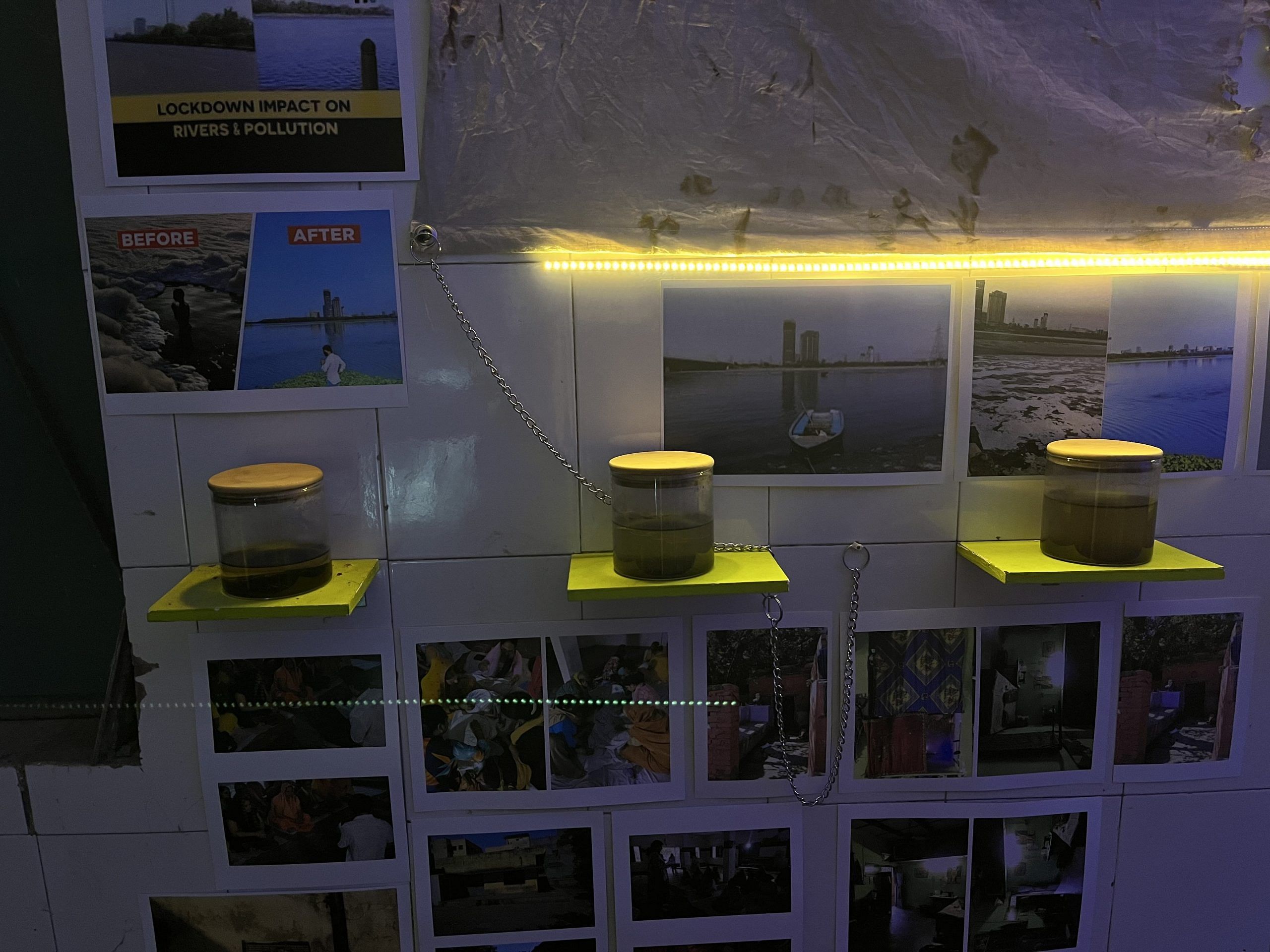
One of the women artists, Anita Devi, enjoyed doing the silai, and the simple act of sitting with other women and discussing their challenges. “I learnt that art can be used as a way of engaging people in a new and interesting way,” she said.
‘See, my voice counts’
For the women, the exhibition is a way to show their family, friends, and neighbours that their voice counts. On a Friday afternoon, the community hall is filled with groups of women entering with guests. They laugh, take selfies, and keep a close eye on the children running happily around the exhibits.
For Kavita, another artist in the project, this fight against air pollution has only just begun. She is creating groups of women who spread awareness and initiate climate conversations in their communities and neighbourhoods. Kavita hopes that these small steps will eventually lead to wider dialogues about the impact of climate change on women. Pointing to one of the tapestry panels, she reads out, “Plant a tree, save a life.”
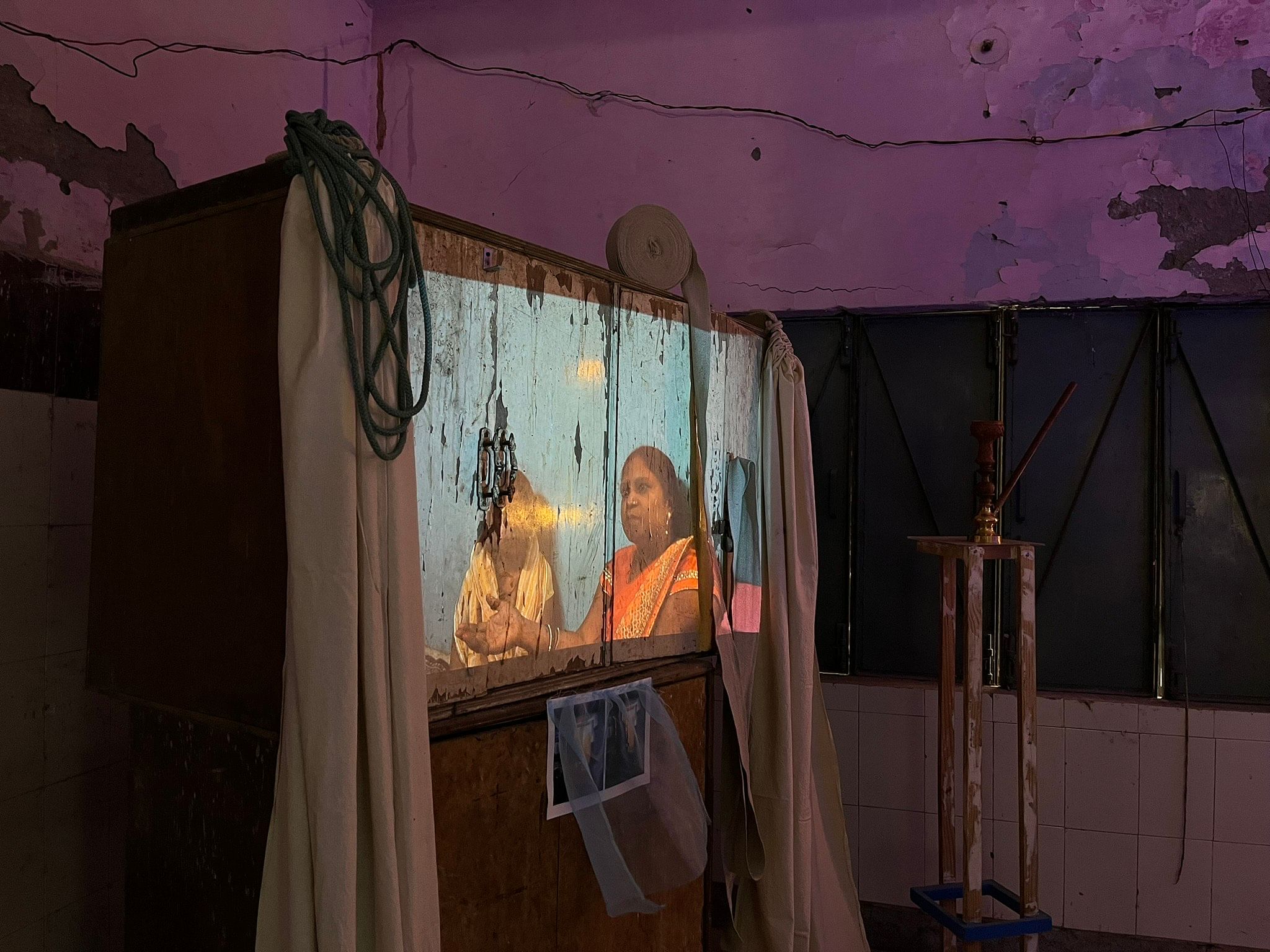
The choice of the community hall was deliberate. They could have easily displayed the tapestries in a gallery, but everyone wanted it to be a place where the women could have fun. “We wanted women to have leisure time by bringing their friends and saying ‘How do you make a private issue a public discourse?’” said Gurupriya.
Somvati’s family was gleefully surprised by the outcome of a project that she had been working on for weeks. While being congratulated by her neighbour who had also brought her daughter-in-law along, Somvati said that her brother has seen the exhibition. “He told everyone I’m a true artist…I keep stitching and making something or the other at home as well!.”
But this exhibition is not the final breath of Hawa Mein Baat. They have a second one coming up on the 1-2 June with the women of Bhalswa, where all of Delhi’s waste gets accumulated. The air they breathe is noxious. And the exhibits will be created from Delhi’s discarded items.
“One woman was saying that when you go to the landfill to look for things, sometimes you find gold and sometimes you find god,” said Gurpriya.
(Edited by Prashant)


